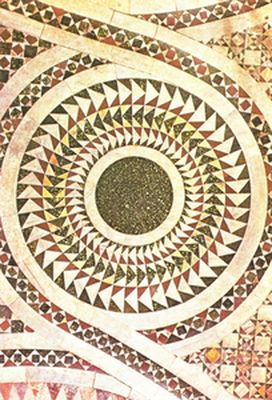Walking on water is not really part of this world, but throughout their history Venetians have felt more at home there than on land. Walking around the Basilica is perhaps the closest one gets to that sensation, as the floor is so wavy that in time it has been called “el mar”, the sea, and one wonders whether this was a planned effect.
Being uneven takes nothing away from the richness one finds by looking down at the floor, which is an eclectic mixture of different colours, techniques and styles blended elegantly into one marbled carpet. In the Basilica, the eyes are often naturally drawn to the bright golden tapestry off the floor, but the mosaics are not just the gold ones adorning the walls, vaults and ceiling, they start by looking downwards. The colours and shapes of the marbles are numerous but the techniques used here are only two, often juxtapposed to one another. If you look closer there are patterns formed with tiny small tesserae each of the same square shape, a pattern called Opus Tesselatum, very popular in the early middle-ages but which was originally a favourite of the ancient Romans. These small tesserae create a wonderfully painted world of flowers, plants, animals and birds, among which the most popular are certainly the peacocks. These compositions made of small marble pieces are often found next to larger blocks of marble, of various colours and of differing shapes, which usually create standardised geometrical motifs and regular patterns that often lead to optical illusions. This technique is called Opus Sectile and was particularly popular in ancient Greece, and was already known there as “painting with stone”. All in all, remember it’s worth looking down every now and then too.






